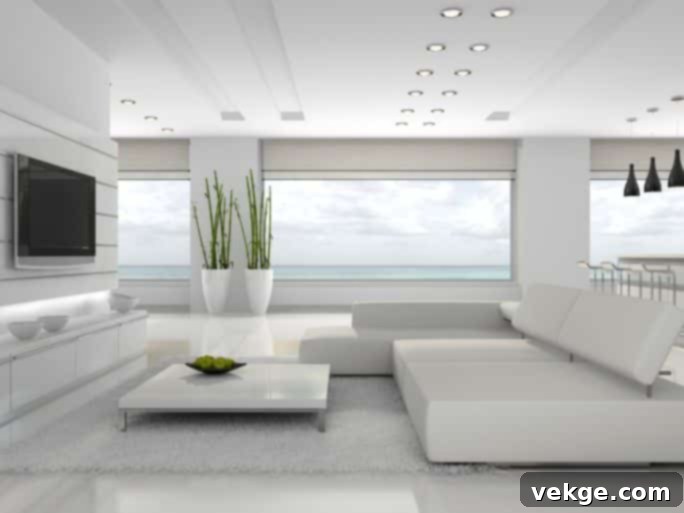Unlock Serenity: Essential Minimalist Decor Ideas & Latest Trends for a Clutter-Free Home
In our increasingly busy and chaotic world, the concept of home as a sanctuary has never been more vital. It’s no wonder that minimalist decor ideas have surged in popularity, offering a refreshing antidote to sensory overload. As famously articulated by Kim Kardashian, whose splendid minimalist home captured global attention, “Everything in my home is really minimal. I find that there is so much chaos out in the world that when I come home, I want it to be really quiet, and I want everything to feel calming.” This sentiment perfectly encapsulates the enduring appeal of minimalism: creating a peaceful, uncluttered haven.
Minimalism in home design is an art form centered on stripping objects down to their most basic and essential forms. It’s a philosophy that champions simplicity, functionality, and a profound appreciation for space. At its core, minimalist decor embraces clean lines, a sophisticated monochromatic palette (where color is thoughtfully used as an accent), open floor plans that encourage flow, and a deliberate emphasis on natural light. Every item in a minimalist space is chosen with intention, ensuring it serves a purpose and harmonizes seamlessly with its surroundings. The result is an environment that radiates openness, cleanliness, tranquility, and a refreshing sense of calm.
However, achieving this serene aesthetic requires careful consideration. The goal is to cultivate a space that feels inviting and lived-in, not cold, sterile, or impersonal. It’s about balance—finding the sweet spot where simplicity meets warmth and functionality meets beauty. This guide delves into the latest and most inspiring trends, offering practical insights to help you perfect the minimalist look in your own home, transforming it into a true sanctuary from the external world.
Exploring Cutting-Edge Trends for Your Minimalist Decor Ideas
The world of minimalist decor is dynamic, continually evolving to meet contemporary needs and preferences while staying true to its core principles of simplicity and functionality. This curated collection of trends and ideas showcases how modern minimalism is embracing new dimensions, offering fresh perspectives on creating calm, stylish, and highly livable spaces. Dive in to discover how these innovative approaches can elevate your home.
1. Sustainable Minimalism: Eco-Conscious Living
As environmental concerns become increasingly pressing, sustainable minimalism emerges as a powerful design philosophy. This trend beautifully merges eco-conscious practices with minimalist aesthetics, focusing on reducing environmental impact without compromising style. Implementing sustainable minimalism involves prioritizing eco-friendly and ethically sourced materials such as bamboo, reclaimed wood, recycled glass, or organic cotton. It champions upcycled or vintage furniture pieces that tell a story and reduce waste. Furthermore, integrating energy-efficient appliances and smart home solutions contributes to a smaller carbon footprint. The ultimate goal is to create a serene, minimalist space that not only looks good but also does good for the planet, reflecting a commitment to thoughtful consumption and mindful living.
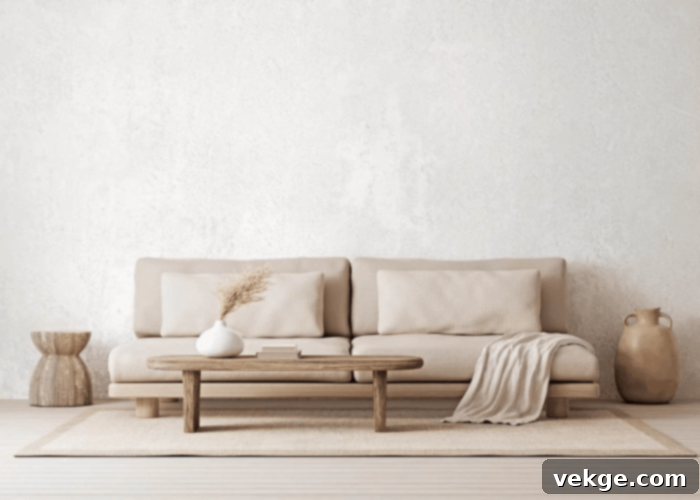
2. Biophilic Minimalism: Connecting with Nature Indoors
For nature enthusiasts yearning to infuse their homes with the calming essence of the outdoors without inviting clutter, biophilic minimalism offers an elegant solution. This trend emphasizes integrating natural elements into minimalist interiors to foster a deeper connection with nature. Think raw, organic materials like unpolished stone, warm-toned wood, and an abundance of lush indoor plants. Strategically placed greenery, from towering fiddle-leaf figs to delicate succulents, purifies the air and introduces vibrant life. Large windows and thoughtfully designed layouts maximize natural light, blurring the lines between indoor and outdoor spaces and creating an atmosphere of tranquility, freshness, and organic harmony. It’s about bringing the serene beauty of the natural world into your structured, simple living environment.
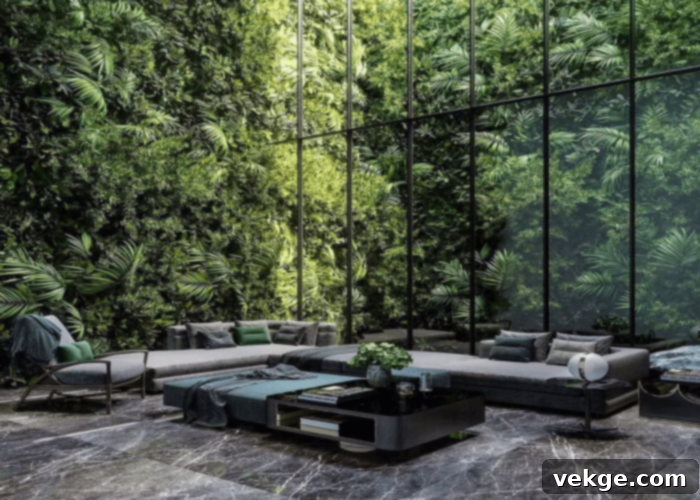
3. Negative Space Minimalism: The Power of Emptiness
Negative space, often referred to as white space, is a fundamental principle in minimalist design. It is the intentionally empty area around and between objects, left untouched to create a sense of openness, visual balance, and breathability. Far from being “empty,” negative space is a powerful design tool that allows key elements to stand out, reducing visual noise and promoting a calm atmosphere. This approach provides ample free movement space, making rooms feel significantly larger and more expansive. By strategically utilizing negative space, designers can create a profound sense of peace and order, encouraging the eye to rest and the mind to clear. It’s about appreciating the quiet pauses in your decor, allowing the space itself to become a key aesthetic feature.
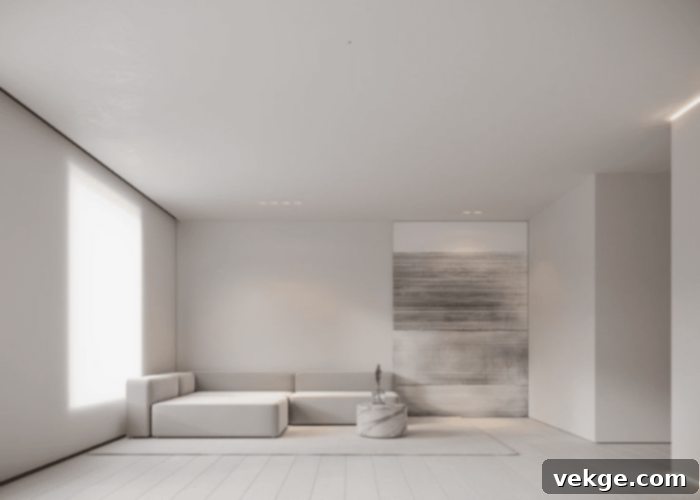
4. Artful Minimalism: Intentional Aesthetic Statements
Minimalism doesn’t mean sacrificing personality; rather, it encourages highly intentional choices. Artful minimalism involves carefully incorporating select art pieces to serve as a focal point and inject a sense of individuality and character into a clean space. The key is to choose art that not only speaks to you but also thoughtfully complements the overall minimalist aesthetic. This could mean a single, impactful large-scale artwork, a perfectly symmetrical gallery wall with subtle pieces, or a sculpture that adds textural interest. The art should enhance the serenity of the room, not detract from it. It’s about quality over quantity, allowing each chosen piece to truly shine and contribute meaningfully to the visual narrative of your home.
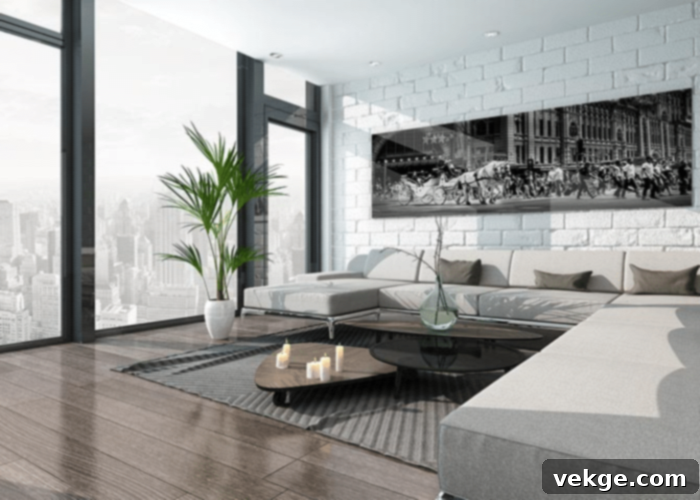
5. Digital Detox Minimalism: Creating Tech-Free Havens
In an age dominated by screens and constant connectivity, digital detox minimalism responds to a growing need for spaces free from digital influences. This trend carves out dedicated areas within the home where individuals can retreat from the digital world and practice mindfulness. These spaces are intentionally designed to be soothing and distraction-free, featuring comfortable, plush furniture, soft lighting, and a palette of calming colors like muted greens, blues, or gentle neutrals. The absence of televisions, tablets, or even smartphones encourages mental quietude and helps alleviate sensory overload. It’s about fostering an environment that promotes relaxation, introspection, and genuine connection with oneself or loved ones, far from the demands of the online world.
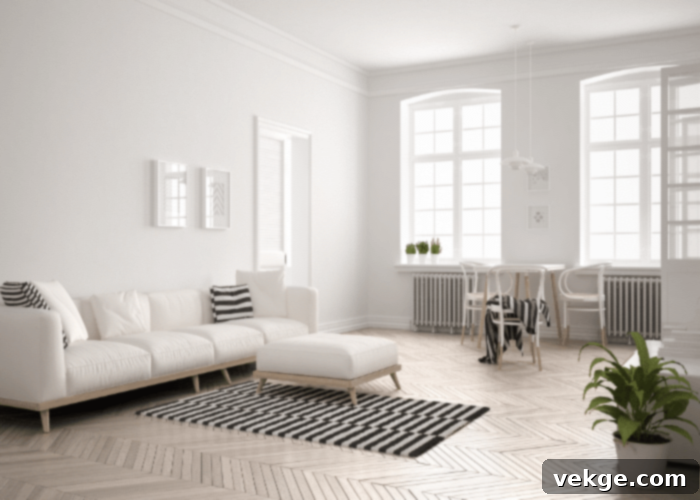
6. Multifunctional Furniture: Smart Space Utilization
Minimalist living, particularly in smaller urban dwellings, often necessitates clever space-saving solutions. Multifunctional furniture is a cornerstone of this approach, maximizing utility without introducing clutter. These innovative pieces are designed to serve multiple purposes, offering flexibility and efficiency. Examples include stylish sofas that effortlessly convert into guest beds, coffee tables with hidden storage compartments, ottomans that double as extra seating and storage, or expandable dining tables. By choosing furniture that works harder, you can maintain an open, spacious feel in your home, ensuring every square foot is optimized for both aesthetics and practicality. It’s the ultimate embodiment of functionality meeting minimalist design.
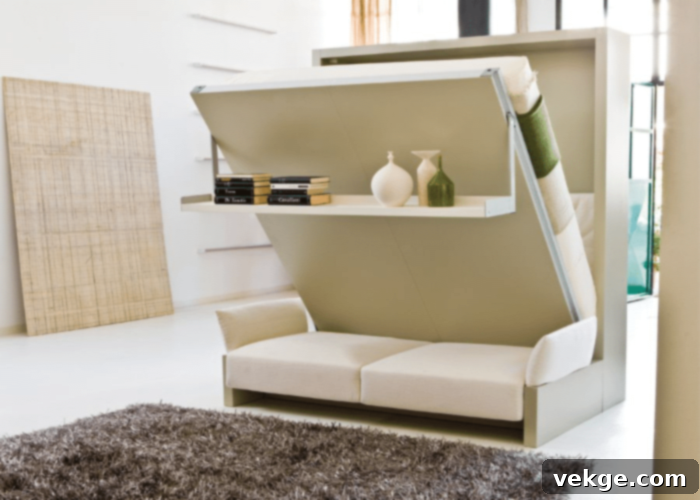
7. Warm Minimalism: Infusing Coziness and Comfort
While traditional minimalism often gravitated towards stark whites and cool grays, warm minimalism represents a beautiful evolution. This trend introduces a softer, more inviting dimension to minimalist spaces by integrating warmer tones and rich textures. Imagine creamy whites, soft beiges, muted terracotta, and earthy greens replacing stark neutrals. Textural elements like chunky knit throws, woven rugs, linen upholstery, and natural wood furniture add depth and tactile appeal, making a space feel incredibly cozy and personal without sacrificing simplicity. It’s about creating an inviting atmosphere that feels both refined and comfortable, proving that minimalism can indeed be warm and welcoming.

8. Curated Clutter: Meaningful Display in Simplicity
The term “clutter” often conjures images of disarray, but in the context of curated clutter, it takes on a refined meaning. This trend challenges the notion that minimalism must equate to absolute emptiness. Instead, it suggests that a carefully selected collection of meaningful objects can enhance a minimalist space, adding personality and narrative. The key is extreme intentionality: each item, whether it’s a cherished souvenir, a piece of artwork, or a selection of books, is chosen for its significance and its ability to harmonize with the overall aesthetic. As long as your space maintains its uniform feel, appears well-connected, spacious, and comfortable, a thoughtfully curated display of personal treasures can perfectly align with your minimalist decor vision, embodying the “less but better” philosophy.
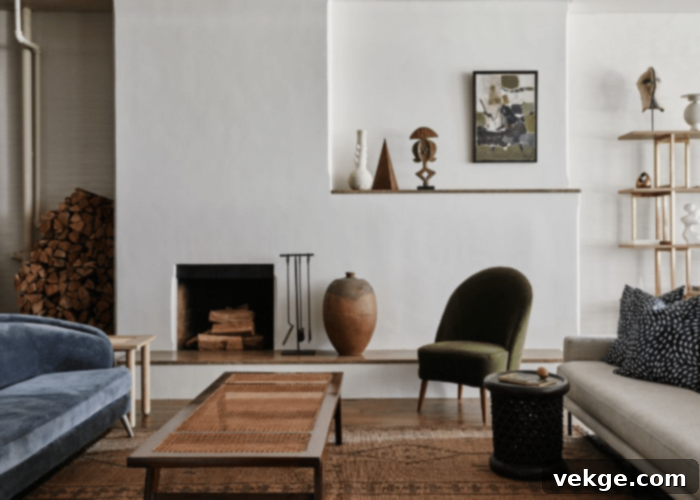
9. Japanese Minimalism: The Zen of ‘Ma’
Deeply rooted in ancient philosophy and aesthetics, Japanese minimalism offers a profound approach to living. This style is often described by the concept of “Ma” (pronounced “maah”), which celebrates not objects themselves, but the significant space and pause between them. It’s an appreciation of emptiness, voids, and the potential that negative space holds. Japanese minimalist decor is characterized by expansive negative spaces, a serene palette of neutral colors, a strong connection to nature through natural materials like bamboo and tatami mats, and an unwavering commitment to simplicity and balance. Inspired by Zen Buddhism, this aesthetic promotes tranquility, reflection, and a harmonious connection with one’s environment, creating a sanctuary where every element has purpose and beauty.
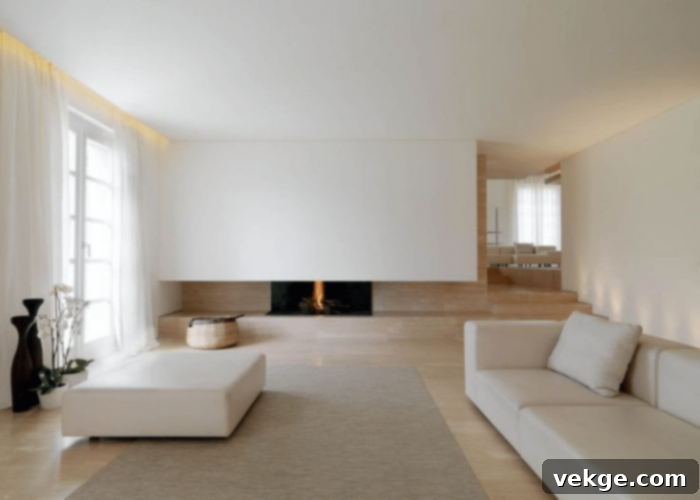
10. Scandinavian Minimalism: Light, Function, and Comfort
Scandinavian minimalist interior design embodies a distinctive blend of functionality, understated elegance, and a deep appreciation for natural light. Born partly out of necessity in a region with long, dark winters, this concept seeks to generate a sense of freedom, lightness, and openness within the home. Scandinavian interiors are characterized by clean lines, natural materials such as light wood, wool, and leather, and a predominantly neutral color palette often accented with subtle pastels or rich, dark blues. The emphasis is on creating bright, comfortable, and highly functional spaces that promote well-being and a sense of “hygge” – a quality of coziness and comfortable conviviality. It’s a style that prioritizes practical design and effortlessly blends simplicity with a warm, inviting atmosphere.
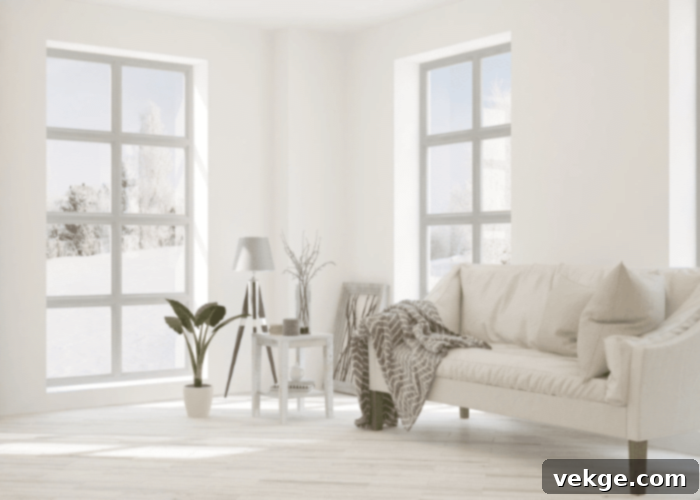
Each of these evolving trends seamlessly integrates with the core minimalist aesthetic, promoting a calm, clean, and spacious environment while adding unique layers of personality and purpose. They demonstrate that minimalism is far from a rigid style; it’s a versatile framework adaptable to diverse tastes and contemporary living challenges.
Tangible Benefits of Embracing Minimalist Decor
Beyond its aesthetic appeal, minimalist decor offers a wealth of practical and psychological benefits, fostering a more peaceful, organized, and overall healthier living environment. Adopting a minimalist approach to your home design can profoundly impact your daily life:
- Reduced Stress & Enhanced Calm: One of the most significant advantages of minimalist decor is its ability to lower stress levels. By intentionally limiting the number of objects, you eliminate visual clutter, resulting in spaces that feel inherently cleaner, more organized, and less overwhelming. A decluttered environment naturally leads to a calmer mind, as there are fewer items competing for your attention and fewer decisions to make regarding management and maintenance.
- Easier Maintenance & More Free Time: The absence of excessive items means that minimalist spaces are remarkably easier and quicker to clean and maintain. Less dusting, less tidying, and less moving things around translate directly into saving precious time and energy. This newfound efficiency allows you to dedicate more moments to personal pursuits, hobbies, or simply relaxing and enjoying your uncluttered surroundings.
- Positive Impact on Mental & Emotional Well-Being: Living in an organized, visually pleasing, and clutter-free space has a profound positive impact on your mental and emotional health. An environment free from chaos promotes a sense of peace and clarity, making it easier to relax, unwind, and focus. It can reduce anxiety, improve concentration, and cultivate a general feeling of well-being, turning your home into a true sanctuary.
- Promotes Sustainable Living & Conscious Consumption: Minimalist decor inherently aligns with sustainability. It actively goes against the policy of excessive consumption and wasteful habits, encouraging you to invest in fewer, higher-quality items that last longer. This mindful approach to purchasing reduces your overall environmental impact, contributing to a more sustainable lifestyle and a healthier planet.
- Increased Focus & Productivity: A clear physical space often translates to a clear mental space. With fewer distractions around, it becomes easier to concentrate on tasks, whether it’s working from home, reading, or engaging in creative activities. This enhanced focus can lead to greater productivity and a more intentional approach to daily living.
Conclusion: Embracing a Harmonious & Intentional Home
The “Less is More” ideology of minimalist decor has rapidly permeated homes worldwide, resonating with a universal desire for simplicity and tranquility. Far from being a rigid, cold, or impersonal style, modern minimalist design offers incredible versatility, allowing individuals to infuse their spaces with personal elements and unique character while staying true to its core tenets. The evolving trends, from sustainable and biophilic approaches to warm and artful expressions, demonstrate minimalism’s adaptability and enduring relevance.
As we’ve explored, the benefits of embracing minimalist decor are vast and undeniably impactful. By consciously adopting this aesthetic, individuals are creating homes that offer much more than just visual appeal. They are cultivating environments that foster mental peace, significantly reduce stress, encourage conscious living, and ultimately promote a healthier, more intentional lifestyle. Whether you’re drawn to the Zen-like calm of Japanese minimalism or the cozy functionality of Scandinavian design, the journey into minimalist decor is an invitation to transform your living space into a truly harmonious sanctuary.
